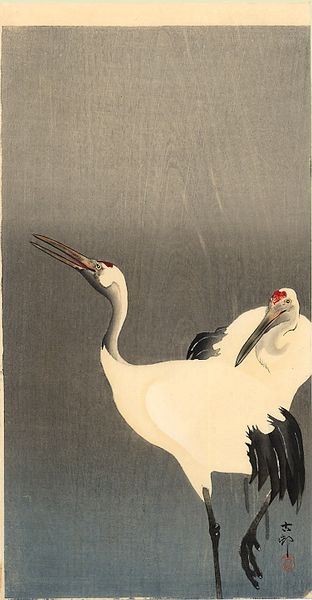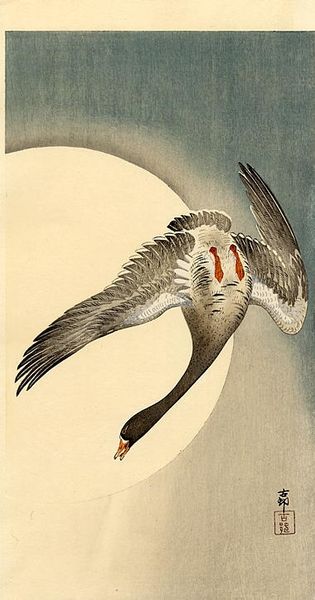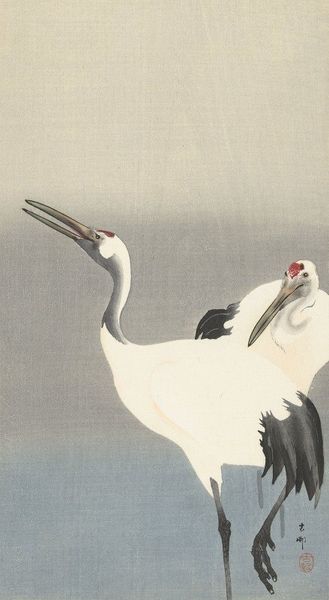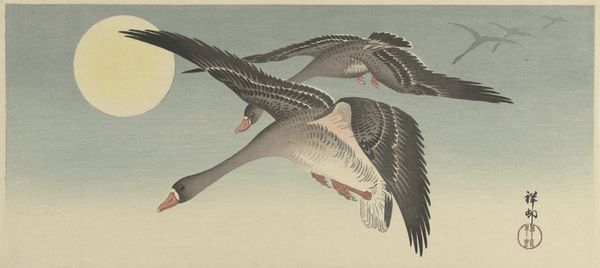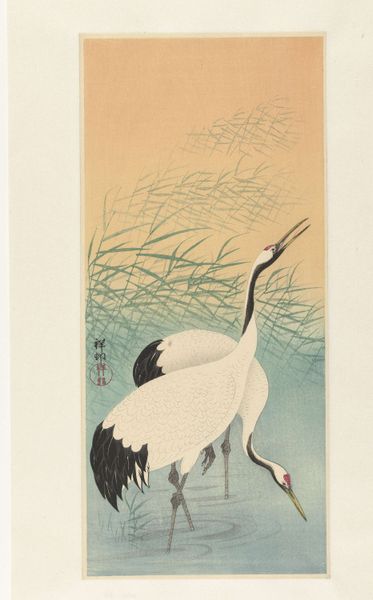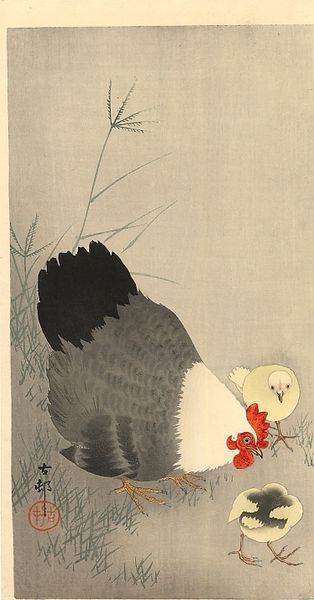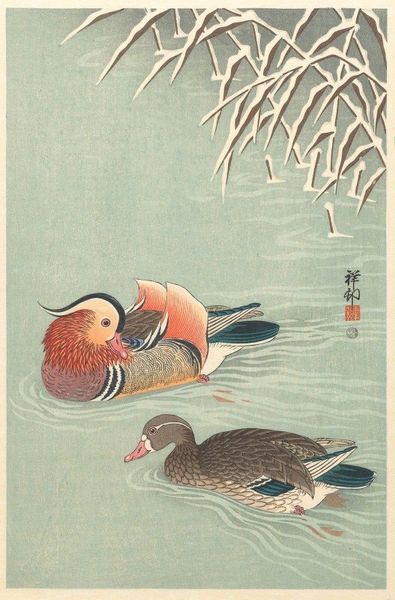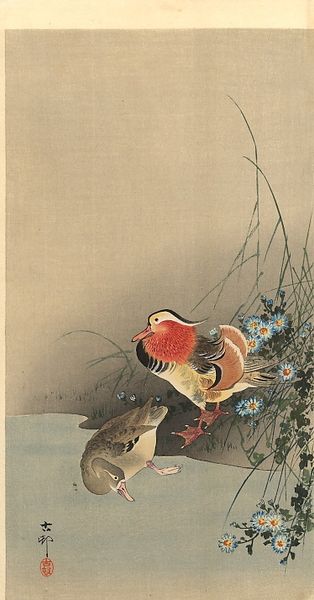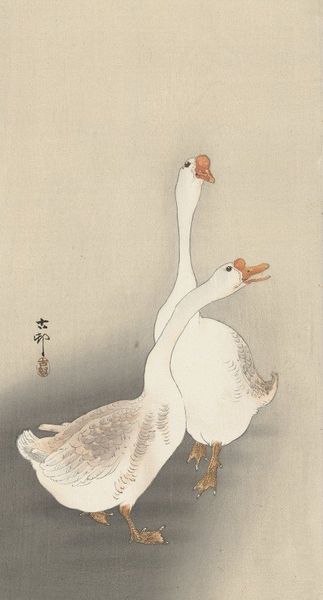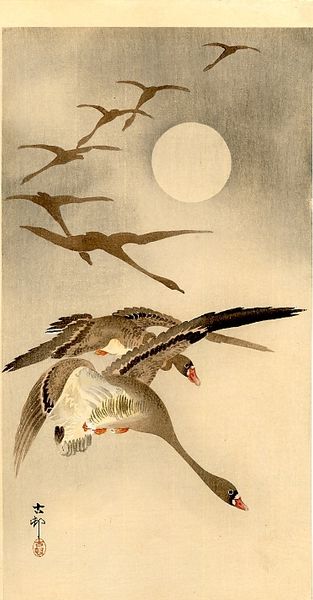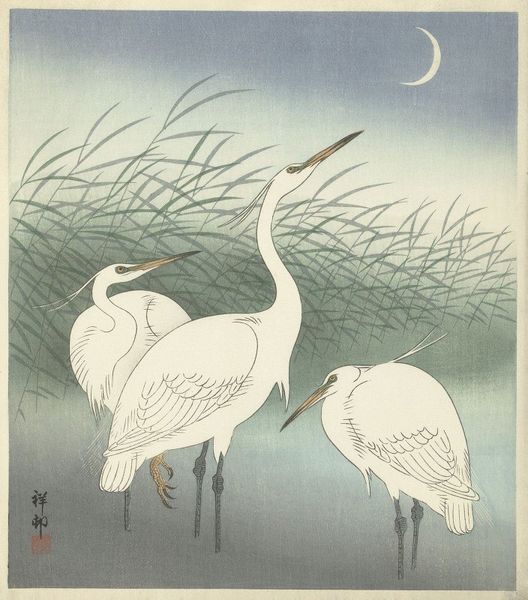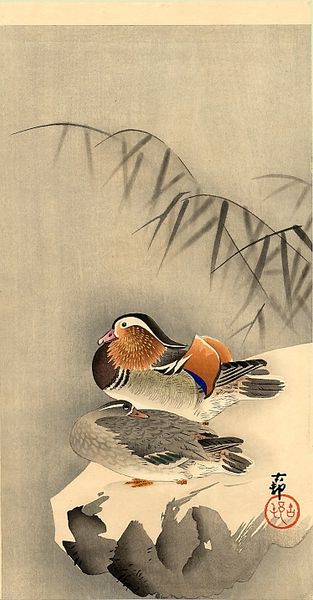
Copyright: Public domain
Curator: This compelling image is "Pelicans," a woodcut print created in 1924 by the Japanese artist Yamamura Toyonari, whose work often draws from the traditions of Ukiyo-e. Editor: What strikes me immediately is the flattening effect of the woodcut—almost as if the artist is presenting us with a kind of stylized textile design more than a representational image. I mean, just look at the simple planes of color! Curator: The graphic simplicity serves the subject. Pelicans themselves are symbolic birds, aren’t they? Frequently connected with sacrifice and charity, pelicans appear across various cultures as images of nourishment and even Christ-like selflessness. Do you sense that here? Editor: Maybe subconsciously, though what's grabbing my attention more is the process of creating this. The visible woodgrain, especially in the sky, speaks volumes about the artist’s hand—literally revealing the labor involved in the printmaking. And this deliberate revealing moves it beyond just “high art.” Curator: It does beg the question of what's celebrated here: is it solely the image, or is it also the mastery of the printing process itself? Given that Yamamura Toyonari worked in the Shin-Hanga movement, dedicated to reviving traditional Japanese printmaking, it seems process carries a significant weight. It certainly isn't only a representation. These birds could represent societal resilience. The pelican adapted, just like a society in that time did. Editor: Precisely. This work lives at the intersection of image, process, and societal change. It demands we reconsider the typical divides—mass production versus handcraft, the social impact on the artist, and what the availability of affordable printed images means to emerging artistic expression and tradition. Curator: I agree, we're seeing more than just a simple image of seabirds; this piece contains visual, symbolic, and historic meaning. It challenges what we consider valuable by elevating everyday scenes to something timeless. Editor: Indeed, a fascinating snapshot of artmaking grappling with industrial progress and, in turn, celebrating local knowledge. A potent reflection for our times too!
Comments
No comments
Be the first to comment and join the conversation on the ultimate creative platform.
